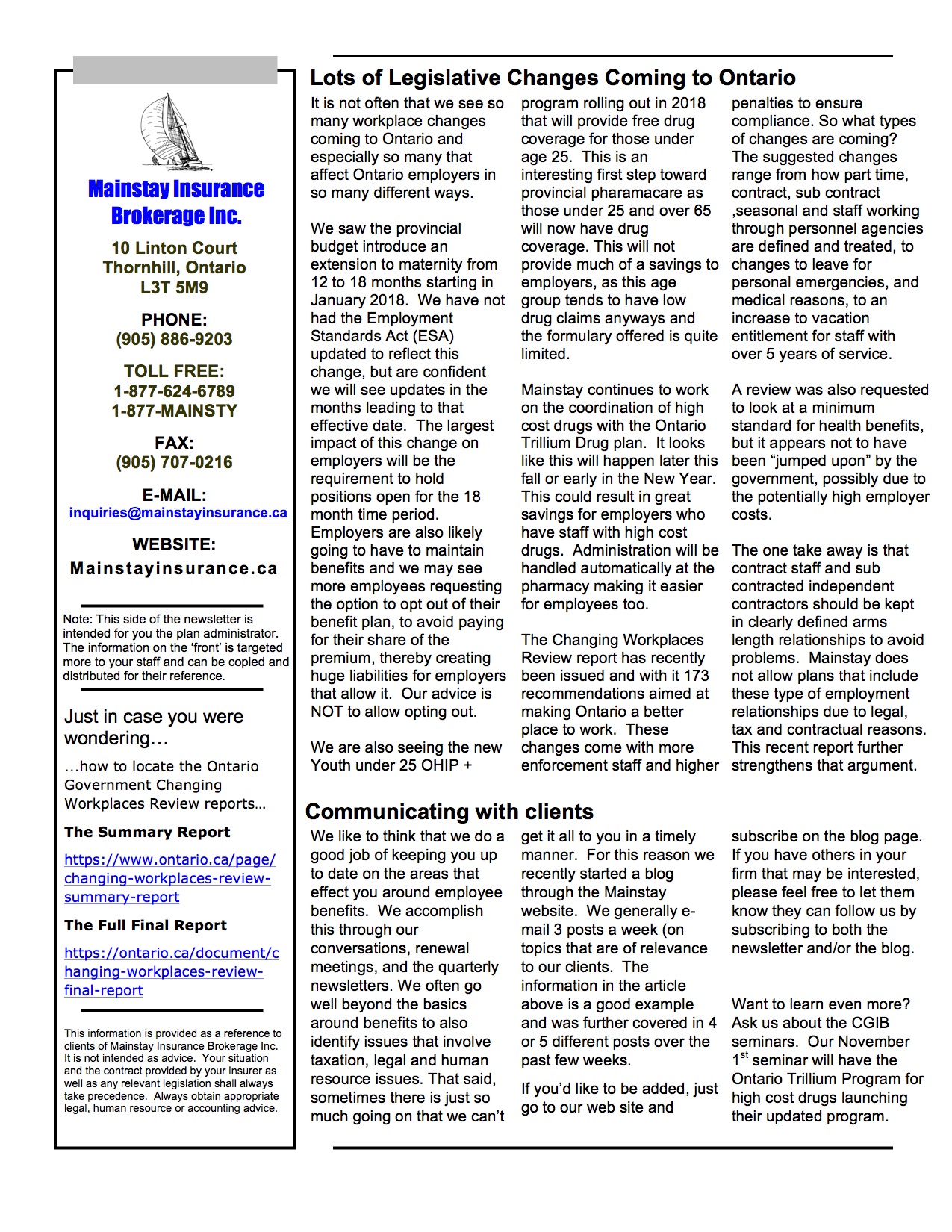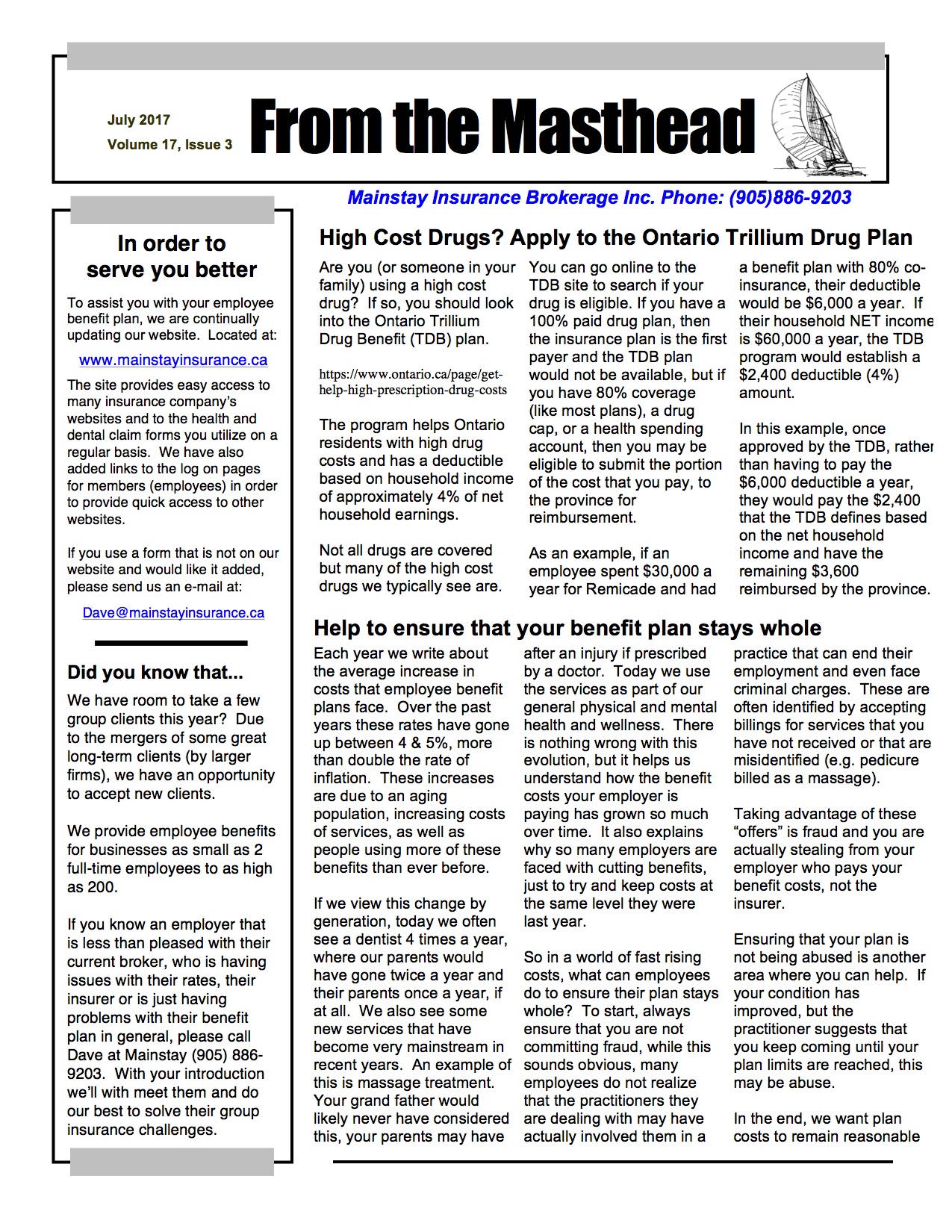Year: 2017
Have your say: Should sick leave be separate from other types of paid time off?
As pointed out in a recent story by The Associated Press and posted on benefitscanada.com, a growing number of employers are combining sick leave and vacation into a single category called paid time off.
Bankrupt by cancer
Cancer is not just a life-threatening disease ― but a financial disaster. Even in Canada
The issue: Cancer patients can face crippling financial hardship, forcing some into bankruptcy. Solutions: All provinces should cover the cost of expensive out-of-hospital cancer drugs; government benefit programs should better respond to cancer patients’ needs.
Public plans facing costs pressure
The annual report, which analyses drug spending trends for 11 publicly funded plans, showed a $1-billion spike in prescription drug spending during the 2015-2016 period. That brought total documented expenditures up to $11.3 billion, 79.7% of which was covered by the plans. The rest was paid by beneficiaries either out-of-pocket or through private drug plans.


